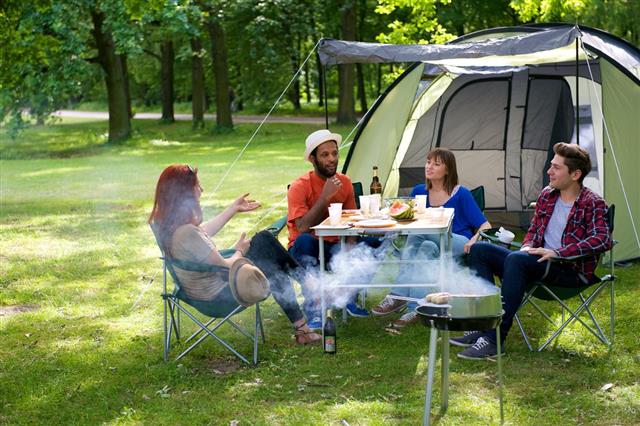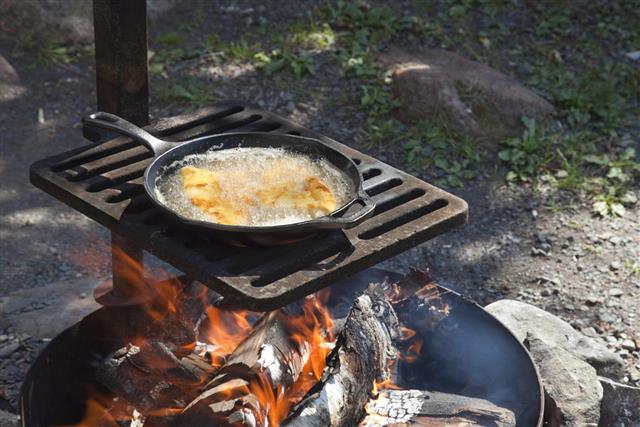
Hibachi grills are convenient to use, portable, and excellent for grilling smaller portions of food. It takes just a few minutes for these charcoal-fired grills to cook meat and vegetables, thereby ensuring that your family and guests aren’t kept waiting for food during a cookout.
Hibachi vs. Teppanyaki Grill
There is a marked difference between the tabletop teppanyaki grill and hibachi grill. While the teppanyaki grill is equipped with a flat griddle or plate, the hibachi grill is small, portable, and has barbecue grills.
A hibachi is a Japanese open-topped heating bowl that holds charcoal. However, in the United States, the term ‘hibachi’ refers to the iron hot plate/griddle utilized by Japanese teppanyaki chefs. These grills are often confused with what the North Americans refer to as hibachi barbecue grills, which function using charcoal or gas.
It is also interesting to note that these hibachi style cooking grills look a lot like the Japanese multipurpose shichirin/kanteki charcoal stoves. This HomeQuicks article discusses the things to know about hibachi cooking while using a charcoal-fired grill.
Hibachi Grill: Features to Consider
Size
Hibachi grills are smaller than conventional barbecue grills, and hence, can cook only small portions of food at a time. Thereby, making it a suitable option wherein the grilled food is meant for preparing starters, or is intended for a very small group. Secondly, these Japanese grills are very easy to store and do not demand much store space.
Less Capacity
It is necessary that you cut the meat into thin slices for proper cooking due to the small capacity available on a hibachi grill. It is inadvisable to cook whole chicken and thick slices of meat, because by the time the outer surface of the meat gets cooked, the inner portion may still remain raw. This may cause the meat to get burnt in the grilling process.
Material
Cast iron hibachis are preferred because these grills are more durable, retain heat better, and do not rust like iron grills. On the other hand, aluminum hibachi grills are the least popular among the lot, because they tend to fall apart and rarely last longer than their warranty period.
Adjustable Racks
It is quite likely that the hibachi grills you find in stores and online, will come with adjustable racks. These racks are meant for controlling the proximity between the food on the grill and its heat source. Durability comes into picture here as well, wherein a badly constructed rack can easily char the food and ruin the cooking experience. The grill must be able to withstand the wear and tear of travel and should be easy to carry and install. Therefore, make sure that the joints of the adjustable rack are sturdy and made of durable metal.
Non-smoking Grill
Unlike slow-cooking barbecue grills, hibachis do not emit any smoke and are not equipped with a lid. These grills are meant for cooking thinner slices of meat such as steaks, pork tenderloins, kebabs, pork chops, and vegetables. The direct-cooking method offered by this type of grill ensures that small portions of food are cooked within minutes and keeps bringing more food on the table during a barbecue session.
Two Heat Levels
A double grill hibachi can be filled to have more charcoal under one grill than the other. The advantage of this being, one side remains comparatively less hot and can be used for slow-grilling the food and keeping it warm. It also saves a lot more time.
Venting System
Although hibachi grills have plenty of slots to allow the air in, some of these grills are also equipped with one or two vents at the side of its base. These vents enable the user to adjust the intensity of the fire to some extent, thereby preventing the food from getting overcooked or burnt.
Ensure that you follow some basic safety precautions while using a hibachi grill. Keep a fire extinguisher ready and do not leave a hot grill unattended.














